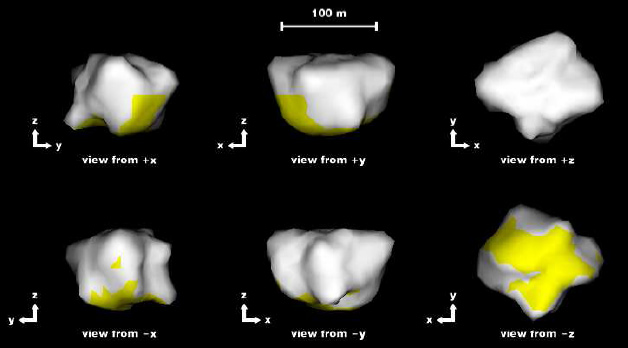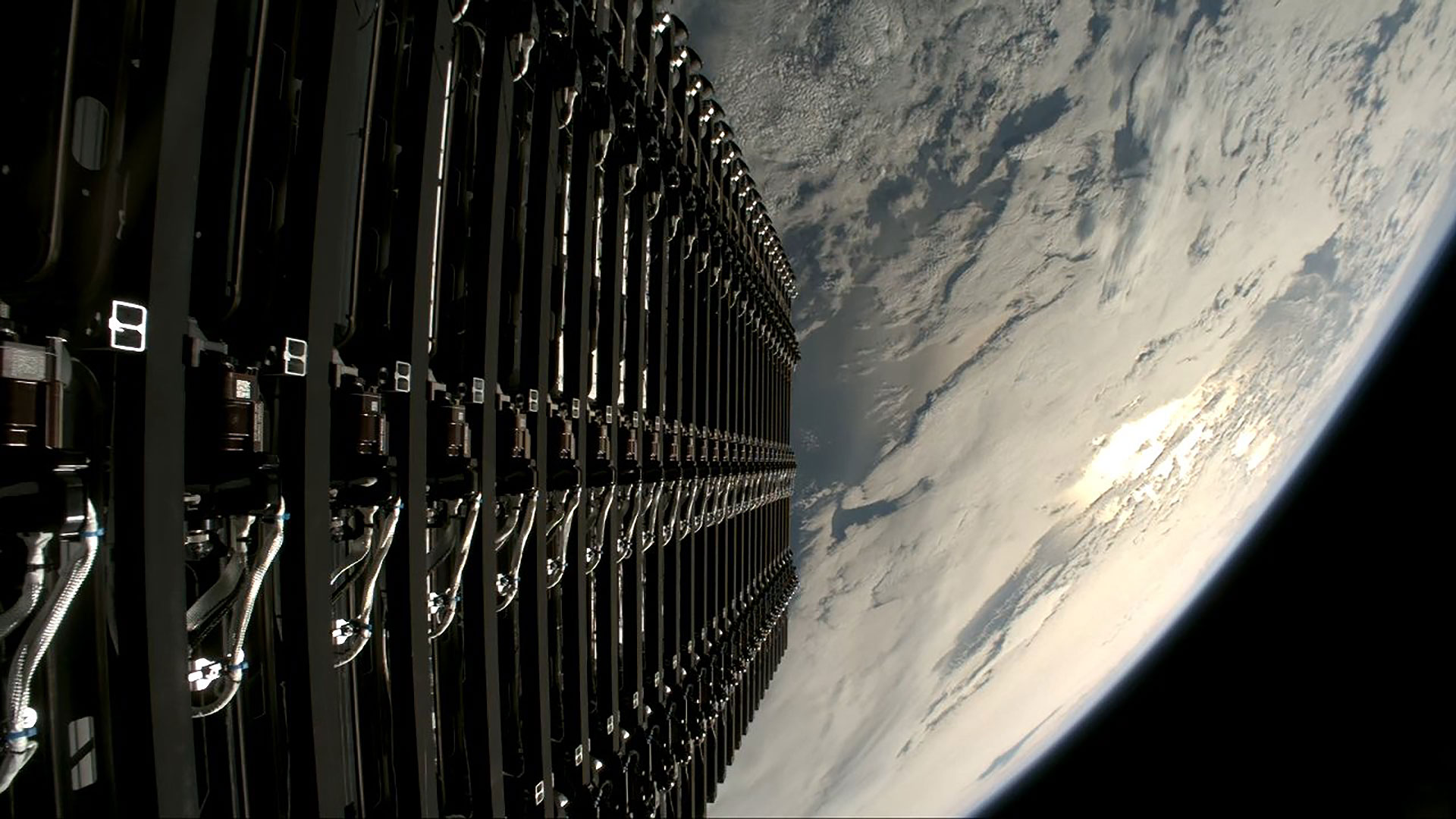Sunlight Increases Space Rock Spin

Twoseparate asteroids have turnedthe Sun's rays into an engine of sorts,accelerating their spin rates by reflecting absorbed sunlight into space,according to a trio of new studies.
Theasteroids, known as 2000 PH5 [image]and 1862 Apollo, are the first to yield direct measurements of sunlight'sspin-altering effect on relatively small space rocks, researchers said.
"Asteroids are among the least altered remnants from theformation of our solar system,"astronomer Stephen Lowry, who led the 2000 PH5 study from of Queens Universityin Belfast, Ireland, told SPACE.com. "So by studying them we are lookingback in time to the conditions present when our solar system formed some 4.5billion years ago."
When alarge Sun-facing portion of an asymmetrical space rock rotates away from thestar and into night, it can radiate more energy than that of smaller areas andtweak its spin rate. The phenomenon, longinferred but now spotted directly, is named the YORPeffect (Yarkovsky-O'Keefe-Radzievskii-Paddack) after the researchers whofirst described it.
"YORP alsoplays an important role in changing the orbits of asteroids between Mars and Jupiter, including their delivery toplanet-crossing orbits," Lowry said. A "planet crossing orbit" is thesort that makes astronomers on Earth worry, of course.
The effectappears to be small for asteroid 2000 PH5, speeding its spin rate up justfractions of a second per year. But for the larger 1862 Apollo, the cumulativeYORP effect over the last 40 years now allows the space rock to complete oneextra spin per trip around the Sun, the new studies found.
Spacerock shimmy
Breaking space news, the latest updates on rocket launches, skywatching events and more!
Asteroid2000 PH5 is a near-Earth space rock with an average radius of just 187 feet (57meters) and a spin rate of once every 12.17 minutes, making for a very short"day" on its surface. For comparison, the Earthcompletes one turn on its axis every 24 hours.
Visualstudies of the space rock between 2001 and 2005 found that its 12-minute dayshortened by one millisecond per year, indicating thatits "daily" spin was growing faster over time, Lowry said. The research isdetailed in the March 9 issue of Science alongside a separate study of the sameasteroid, led by researcher Patrick Taylor at Cornell University in Ithaca, NewYork, who used radar observations that support the 2000 PH5's YORP effect [image].
"We expect the changes to be this small, as in theory ittakes millions of years to see a large effect," Lowry said, adding that histeam used an armada of telescopes to track the asteroids' brightness androtation.
But aswifter example of YORP in action was reported by a research team led by MikkoKaasalainen, of Finland's Rolf Nevanlinna Institute, which found that the4,593-foot-wide (1,400-meter) 1862 Apollo received enough of a push fromsunlight over the last 40 years that it now performs one additional spin--or anextra asteroid "day"--per orbit around the Sun.The research is detailed online journal Nature.
"The changeis fairly large and clearly visible in photometric light curves," theresearchers wrote.
Kaasalainen'steam used archived and new photometric light curve measurements of 1862 Apollobetween 1980 and 2005 to monitor the YORP effect's influence on the space rock.A 2005 NASA report found that 1862 Apollo completed a single spin about onesevery three hours.
Spinningout of control
Kaasalainenand his colleagues believe 1862 Apollo may have reached its peak spin rateboost from the YORP effect, which may have led the object to shed some mass andform a tiny satellite to break free. Observations have found 1862 Apollo'ssmall companion is less than one-tenth the size its counterpart, much too smallto account for the spin rate changes attributed to the YORP effect, researcherssaid.
Lowry saidthe YORP effect could ultimately spin 2005 PH5 so fast that one "day" on theasteroid could run as short as 20 seconds. The YORP effect could also lead tothe asteroid's destruction, forcing it to spin so fast it sheds mass or losescohesion.
"Who knows, perhaps we could witness one of theseobjects spontaneously breaking apart," Lowry said. "That would be quite ashow!"
- Fresh Spin on Solar Powered Asteroids
- 2007 Guide: Find Bright Asteroids This Year
- Asteroid Might Hit Earth in 2880, Unless it is Painted
- VIDEO: The Asteroid Paradox
- VIDEO: Killer Asteroids and Comets
- IMAGES: Asteroid Gallery
- IMAGES: The Great Comets
- All About Asteroids

Tariq is the award-winning Editor-in-Chief of Space.com and joined the team in 2001. He covers human spaceflight, as well as skywatching and entertainment. He became Space.com's Editor-in-Chief in 2019. Before joining Space.com, Tariq was a staff reporter for The Los Angeles Times covering education and city beats in La Habra, Fullerton and Huntington Beach. He's a recipient of the 2022 Harry Kolcum Award for excellence in space reporting and the 2025 Space Pioneer Award from the National Space Society. He is an Eagle Scout and Space Camp alum with journalism degrees from the USC and NYU. You can find Tariq at Space.com and as the co-host to the This Week In Space podcast on the TWiT network. To see his latest project, you can follow Tariq on Twitter @tariqjmalik.
